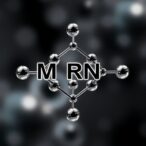Researchers at the Nanoscience Initiative, Advanced Science Research Center at the CUNY Graduate Center (CUNY ASRC) have made what they describe as a breakthrough in the fight against viral diseases, which could lead to the development of the first broad-spectrum antiviral (BSA) that is effective against a wide range of pathogenic viruses, including future pandemic threats. The team’s preclinical study identified a series of synthetic carbohydrate receptors (SCRs) that bind to conserved envelope virus glycans on viral surfaces, and block viral attachment and/or fusion to prevent infection. In vitro experiments confirmed the activity of the candidates against multiple virus types, and tests in live mice showed that a single dose significantly reduced SARS-CoV-2 infection.
Principal investigator Adam Braunschweig, PhD, a Nanoscience Initiative professor at CUNY ASRC and a chemistry and biochemistry professor at Hunter College, and colleagues reported on their studies in Science Advances, in a paper titled “Broad-spectrum synthetic carbohydrate receptors (SCRs) inhibit viral entry across multiple virus families.” In their paper, the authors wrote: “These results identify conserved viral N-glycans as promising BSA targets and establish SCRs as candidate prophylactic agents against enveloped viruses with pandemic potential.”
Viral pandemics pose significant threats to public health and the global economy, the authors wrote. But unlike bacterial infections—for which doctors often begin immediate treatment using broad-spectrum antibiotics until they have identified the specific causal bacteria—viral infections are treated using antivirals, and these are narrowly targeted and effective against only a small set of related viruses.
“This lack of treatments can leave populations vulnerable for years, while vaccines and therapeutics are being developed,” said Braunschweig. The authors added, “Despite medical advances, the absence of broad-spectrum antivirals (BSAs) prevents rapid responses to emerging viral threats … Developing new vaccines takes time, all while the disease and its associated health consequences continue to spread.”
One major challenge in developing BSAs is the sequence variability of viral proteins, which are the traditional targets of antivirals, the investigators further explained. Even among viruses in the same family, proteins can vary widely, and the high viral protein mutation rate allows for rapid development of antiviral resistance. “Ideally, BSAs should disrupt the action of a widely shared viral target that does not easily evolve to become resistant,” the team continued.
Braunschweig and colleagues set out to address this global health challenge by targeting viral envelope glycans—sugar molecules that are structurally conserved across unrelated viral families. While these are shared features found on the surface of many viruses, they have until now remained an untapped target for antiviral drug development. “Despite their promise as BSA targets, no currently approved antivirals target envelope glycoprotein N-glycans,” the scientists acknowledged. “N-glycans have not been pursued widely as drug targets because of concerns over toxicity and the challenges of developing molecules that bind them.”
For their newly reported study, the researchers screened 57 synthetic carbohydrate receptors (SCRs), which are small molecules designed to bind to viral glycans. They identified four lead compounds that successfully blocked infection from seven different viruses across five unrelated families, including some of the world’s most dangerous pathogens: Ebola, Marburg, Nipah, Hendra, SARS-CoV-1, and SARS-CoV-2. “These viruses, known for their pandemic potential and severe impact on public health and the global economy, pose continuous challenges due to their mutagenic capabilities and the absence of readily available, effective therapeutics,” Braunschweig and colleagues pointed out.
![Synthetic carbohydrate receptors act as broad-spectrum antivirals by binding to conserved N-glycans and in doing so, blocking virus binding and virus fusion. [Khushabu Thakur]](https://www.genengnews.com/wp-content/uploads/2025/08/low-res-1-300x189.jpeg)
In a critical test, one of the lead SCR compounds was used to treat mice infected with SARS-CoV-2. Ninety percent of the mice receiving the SCR survived, compared to none in the control group. Further analysis confirmed that the compounds work by binding to viral envelope glycans—a novel mechanism of action with potential applications not only for infectious diseases but also for cancer and immune disorders.
“The ability of SCRs to target N-glycans on viral envelope glycoproteins, which is a feature shared across several high-risk viral families, offers a strategic advantage by focusing on a conserved aspect of viral biology less prone to rapid evolutionary changes,” the scientists stated. “We further show that the mechanism of action of our SCRs involves both inhibition of viral binding to host receptors and inhibition of membrane fusion during viral entry.”
“This is the kind of antiviral tool the world urgently needs,” said Braunschweig. “If a new virus emerges tomorrow, we currently have nothing to deploy. These compounds offer the potential to be that first line of defense.” In their paper the authors concluded, “The broad and effective inhibition of enveloped virus infections by SCRs targeting glycans instead of proteins, with minimal cytotoxicity, represents a promising avenue to address the rapid mutation rates and diverse protein targets that complicate the development of traditional antivirals … This approach not only expands the potential for developing effective prophylactics and therapeutics against current pandemic threats but also provides a foundation for addressing future outbreaks of novel viruses.”
The next phase of the team’s research will focus on advancing the most promising compounds into clinical trials.



